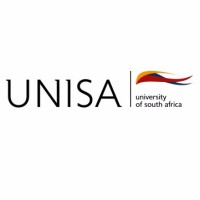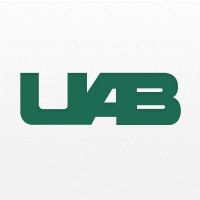Company Cyber Security Posture
NANA
NA Company Details
NA
NA
NA
NA
NA
NA
Scan still pending
NA
NA
Between 200 and 800
This score is AI-generated and less favored by cyber insurers, who prefer the TPRM score.
 NA Global Score
NA Global Score.png)

Company Scoring based on AI Models
| Model Name | Date | Description | Current Score Difference | Score |
|---|---|---|---|---|
| AVERAGE-Industry | 03-12-2025 | This score represents the average cybersecurity rating of companies already scanned within the same industry. It provides a benchmark to compare an individual company's security posture against its industry peers. | N/A | Between 200 and 800 |
Company Cyber Security News & History
| Entity | Type | Severity | Impact | Seen | Url ID | Details | View |
|---|
Company Subsidiaries

NA
Access Data Using Our API

Get company history
.png)
NA Cyber Security News
Mizzou recognized for leadership in cybersecurity
This honor underscores Mizzou's sustained excellence in advancing cybersecurity through rigorous research, innovative curriculum development and ...
Columbia Cybersecurity Salaries: What Can You Expect to Earn?
Discover cybersecurity salary expectations in Columbia, Missouri. Learn about factors, entry to senior-level positions, perks, and future ...
Danielle Jablanski Joins STV as Cybersecurity Consulting Program Lead
Danielle Jablanski, a widely respected figure in the operational technology (OT) cybersecurity space, has joined engineering and design firm STV ...
Lack of cybersecurity education is America's biggest weakness
The world is more reliant on digital technology every day. Accompanying this swift technological revolution are thousands of new threats to the ...
Mizzou Engineers advance cybersecurity on the battlefield
Now Mizzou researchers have successfully demonstrated an artificial intelligence- (AI) driven framework which is designed to ensure ...
City of Dover under state of emergency following potential cybersecurity breach
Dover's mayor declares a state of general emergency following a potential cyber security breach. A release from the city reads the state of ...
Top 10 Tech Internships Offered in Columbia
Socket is this cool tech company in Columbia, Missouri that's been around since 1994. They offer an awesome internship program where you get to ...
Securing your online cart
Using your credit card or a payment service such as PayPal, Google Pay or Apple Pay is the safest way to make payments for online purchases ...

NA Similar Companies

University of South Africa/Universiteit van Suid-Afrika
The University of South Africa is a comprehensive, open learning and distance education institution. We produce graduates who have what it takes to succeed at open distance learning: diligence, determination and commitment. Our graduates go on to make significant contributions to society and assist

University of Illinois Urbana-Champaign
The University of Illinois Urbana-Champaign is dedicated to building upon its tradition of excellence in education, research, public engagement and economic development. More than 3,000 faculty members discover and create new knowledge. Their work is an economic engine for the state and is recognize

University of Ottawa
À l’Université d’Ottawa, la plus grande université bilingue au monde, la population étudiante peut choisir d’étudier en français, en anglais, ou dans les deux langues. Située au cœur de la capitale du Canada, pays du G8, notre université jouit d’un accès direct aux plus grandes institutions du pays.

Boston University
Boston University is one of the leading private research and teaching institutions in the world today, with three primary campuses in the heart of Boston and programs around the world. Boston University was chartered in 1869 by Lee Claflin, Jacob Sleeper, and Isaac Rich, three successful Methodist

University of Alabama at Birmingham
Known for its innovative and interdisciplinary approach to education at both the graduate and undergraduate levels, the University of Alabama at Birmingham, a part of the University of Alabama System, is an internationally renowned research university and academic medical center with over $700 milli

Bright Horizons UK
This is more than childcare. This is childhood. We have a network of over 300 Bright Horizons nurseries delivering exceptional care and education. In our nurseries, our teams practice our unique Nurture Approach; an evidence-based blend of holistic learning alongside support for children’s emoti

Frequently Asked Questions
Explore insights on cybersecurity incidents, risk posture, and Rankiteo's assessments.
NA CyberSecurity History Information
How many cyber incidents has NA faced?
Total Incidents: According to Rankiteo, NA has faced 0 incidents in the past.
What types of cybersecurity incidents have occurred at NA?
Incident Types: The types of cybersecurity incidents that have occurred include .
Additional Questions
What Do We Measure?
















Every week, Rankiteo analyzes billions of signals to give organizations a sharper, faster view of emerging risks. With deeper, more actionable intelligence at their fingertips, security teams can outpace threat actors, respond instantly to Zero-Day attacks, and dramatically shrink their risk exposure window.
These are some of the factors we use to calculate the overall score:
Identify exposed access points, detect misconfigured SSL certificates, and uncover vulnerabilities across the network infrastructure.
Gain visibility into the software components used within an organization to detect vulnerabilities, manage risk, and ensure supply chain security.
Monitor and manage all IT assets and their configurations to ensure accurate, real-time visibility across the company's technology environment.
Leverage real-time insights on active threats, malware campaigns, and emerging vulnerabilities to proactively defend against evolving cyberattacks.




